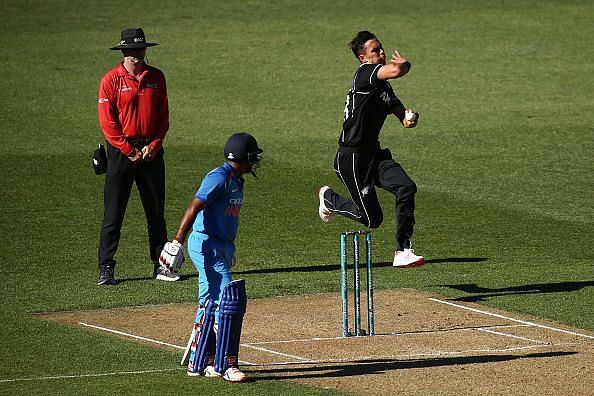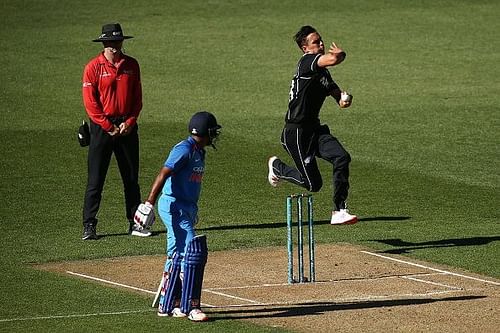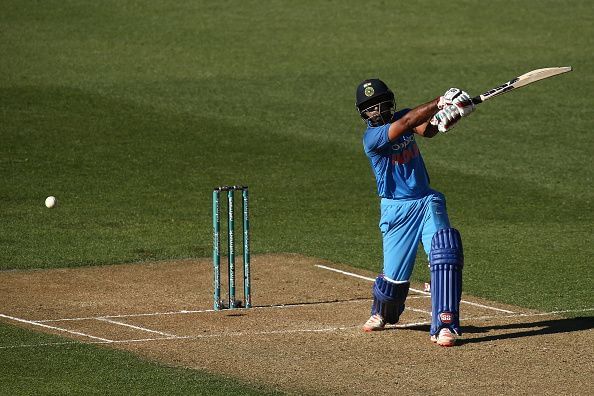
New Zealand vs India: Takeaways for the two teams
New Zealand usually plays ODI cricket with a mixture of competitiveness and good spirit, with the former aspect more evident since the 2015 World Cup. But that wasn't so in this 4-1 series loss to India, with the series throwing up more areas of concern than solutions to existing ones. Colin Munro's inconsistency as an opener and their bowling combination remain the two main areas of concern.
For India, though, this series was more about fine-tuning their player combinations and trying out different players in different situations. But it also raised questions about some players' ability to deal with swing bowling.
The Black Caps are stuck

Colin Munro's average of 25.31 as an opening batsman in ODI cricket is a stark contrast to his record, an average of 46.13, as an opening batsman in T20 cricket. He might be better off if he was to play in the middle-order, scoring quickly towards the end of an innings in the same fashion as a David Miller or a Hardik Pandya.
Henry Nicholls was tried as an opener in the last two matches of the series, but that is too small a sample size to determine whether he can do well in that position.
The batsmen also failed to counter the wrist spin of Kuldeep Yadav and Yuzvendra Chahal, with Yadav taking eight wickets and Chahal nine. Losing wickets in the middle overs to the duo ended hurt chances in the series, especially in the first two matches. Only Kane Williamson and Ross Taylor displayed some control when batting against the two.
The Black Caps also tried different bowling combinations through the series, including dropping Tim Southee after the first ODI. They also played two spinners from among Mitchell Santner, Ish Sodhi and Todd Astle, while also trying Lockie Ferguson and Matt Henry along with Trent Boult. Boult was their best bowler in the series with 12 wickets but lacked support from the other bowlers. Southee is less effective when the ball does not swing, while both Henry and Ferguson bowl with more pace than he does.
Jimmy Neesham has established himself as the better batting option among the allrounders, averaging 83.50 with the bat and 19.75 with the ball in 2019 so far. Colin de Grandhomme has long been the preferred allrounder but averages 14.17 with the bat and 56.11 with the ball since playing India in 2017, and will have to improve considerably to remain in contention for the 2019 World Cup.
For India, it was about being better

India took the opportunity to try different bowling combinations, playing one or both of Kuldeep Yadav and Yuzvendra Chahal alongside Mohammad Shami and Bhuvneshwar Kumar. Shami and Chahal both took nine wickets each.
Ambati Rayudu has established himself in the middle-order with 190 runs at an average of 63.33 in five innings. Dinesh Karthik has been identified as the backup wicketkeeper, playing when MS Dhoni was injured. Kedhar Jadhav continued to impress as a bowling option during the middle overs with three wickets, including that of Kane Williamson in the fifth ODI.
Vijay Shankar is also seen as the backup to allrounder Hardik Pandya, impressing with 45 runs in the fifth ODI after India had collapsed to 18/4.
Their major problem was the ability to deal with swing bowling, collapsing to 35/6 in the fourth ODI and 18/4 in the fifth. They showed some ability to do so in the fifth, recovering after the collapse to post 252.
New Zealand has three more matches against Bangladesh to determine their World Cup squad and to solve their existing problems. India has the ODI series against Australia to continue their fine-tuning, having almost completely identified their squad for the World Cup.